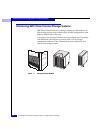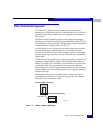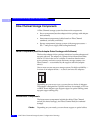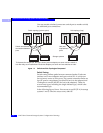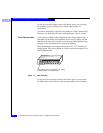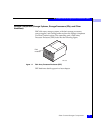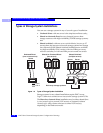
1
Fibre Channel Background
1-3
About Fibre Channel Storage Systems and Networks (SANs)
Fibre Channel Background
Fibre Channel is a high-performance serial protocol that allows
transmission of both network and I/O channel data. It is a low level
protocol, independent of data types, and supports such formats as
SCSI and IP.
The Fibre Channel standard supports several physical topologies,
including switched fabric point-to-point and arbitrated loop (FC-AL).
The topologies used by the Fibre Channel storage systems described
in this manual are switched fabric and FC-AL.
A switch fabric is a set of point-to-point connections between nodes,
the connection being made through one or more Fibre Channel
switches. Each node may have its own unique address, but the path
between nodes is governed by a switch. The nodes are connected by
optical cable.
A Fibre Channel arbitrated loop is a circuit consisting of nodes. Each
node has a unique address, called a Fibre Channel arbitrated loop
address. The nodes are connected by optical cables. An optical cable
can transmit data over great distances for connections that span
entire enterprises and can support remote disaster recovery systems.
Copper cable serves well for local connections; its length is limited to
30 meters (99 feet).
Each connected device in a switched fabric or arbitrated loop is a
server adapter (initiator) or a target (storage system). The switches
and hubs are not considered nodes.
Figure 1-2 Nodes - Initiator and Target
EMC1802
Server Adapter (initiator)
Connection
Storage System (tar
get)
Node
Adapter
Node










